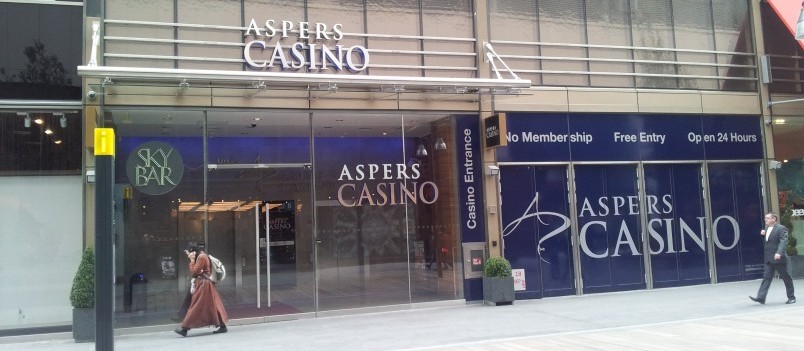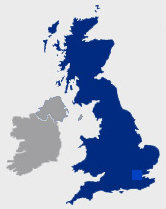Lies, damn lies and SuperCasinos
If you were to casually read the UK papers, you could be forgiven for thinking that we are about to be invaded by dozens of gargantuan casinos, with one on every street corner and machine by the thousand.
The fact is, there’s been a lot of press hysteria and excitement over the UK casino world in the last few years, prompted by a new law, and a general failure to understand the situation. We at UKCC figured it’s time for a simple explanation of the facts.
 Shiny Supercasinos like this one won’t be gracing the UK in our lifetimes, unless the law changes ….
Shiny Supercasinos like this one won’t be gracing the UK in our lifetimes, unless the law changes ….
Gambling Act 2005
The new law took an awfully long time top put together, and was preceded by all kinds of reports and consultations, far too dull to go into here. Suffice to say the Gambling Act 2005 – which came into effect in 2007 – was eagerly anticipated to say the least. It affected all forms of gambling in the UK, but casino operators were particularly interested given that the previous bit of law that affected casinos was the Gaming Act of 1968 – and that’s a long time to wait. Until the new Act, casinos were only allowed in “Permitted areas” – essentially towns and cities that were a certain size way back in 1970 (plus a few coastal resorts). This meant that new towns and recently growing areas like Peterborough, Swindon and Milton Keynes had never had a chance to develop a casino offer.
There were all sorts of details in the law, but the one that got everyone’s attention was the prospect of new casino licences being granted. There had been plenty of political tedium doing the rounds – the original plan had been for 8 “Small”, 8 “Large” and 8 “Regional” casinos. These names are a bit misleading – the “Small” and “Large” weren’t really any bigger than some of the bigger casinos we have in the UK already, with the major difference being more slots. Large licences were to be allowed up to 150 slots, with Small ones up to 80. They weren’t the big story, however ….
Regional Casino licences – huge potential, no delivery
The Regional casino licences were what got everybody interested, across the globe. Originally there were supposed to be 8 of these beasts, with over 1,000 slots, all manner of integrated leisure excitement, and huge job creation. The scale of these was big enough that the huge US operators were interested, and plenty of them had hooked up with UK developers and operators to deliver Vegas-scale gaming to the UK.
However, the headline nature of this proposition drew some unwanted attention. With fears of an explosion in problem gambling (with little to no evidence and, at the time, a failure to understand the dangers of the roulette machines in over 8,000 bookies around the country) the Daily Mail went to town on the whole thing, with some sensationalist headlines and a general fear filled approach. Politically this became a hot potato, and before long the Regional licences were dropped to one. This was “awarded” to Manchester – to the great disappointment of Blackpool, who thought they were in pole position. However, eventually this too was dropped, so all that remained were the Large and Small licences.
16 new casinos ? Hardly ….
Of those 16 licences, several are not built and will quite possibly never be built. The reason ? Well, the Casino Advisory Panel – the people who decided where the licences should be awarded – were chiefly concerned with regeneration, rather than commercial viability. That’s why some of the licence winners were places like East Lindsey (think Skegness), Torbay (Torquay) and Dumfries and Galloway (errr … Stranraer ?). Nobody is going to invest £3M pus in place like Stranraer, so for my money a great opportunity has been wasted.
In fact of those 16 licences, even now several years later only two are currently operating (Aspers Stratford and Aspers Milton Keynes). Others are on the way – Genting Solihull leads the way and the GGV sites in Bath and Leeds are being built – but the failure of the CAP to take a commercial view has cost a lot of jobs. Awarding casinos to towns that already have operating casinos was always going to make it harder to get operators interested, and the nature of the way the licences were awarded to operators – a kind of auction process – meant that the only ones that would have a real value would be the ones in virgin territory. This is underlined by those two that are open – they are the only two “Large” licences that were in non-permitted areas.
The way forward
 The shiny new Aspers casino in the Westfield shopping centre, Stratford, East London
The shiny new Aspers casino in the Westfield shopping centre, Stratford, East London
Well, from here, it’s hard to see where we go next. Most of the competition processes have finished now, or will never start, with one exception – Southampton. The two stage process for a Large licence in Southampton is near the end of stage one, with 5 operators bidding across three sites (the council has a “preferred” site which all five applicants have bid for – two operators have a second bid). Looking at the local press, there is still plenty of talk of Supercasinos, while the reality is that the winning casino won’t be much bigger than some of the 1968 casinos, like G Coventry of Genting Sheffield.
It’s a slow process, and with a fair wind the casino won’t be open for at least three years. With all of this process, one can’t help wondering how many jobs and how much investment has gone begging. It took 40 years to get a new law, and can we really be comfortable that the results were worth the wait ?


